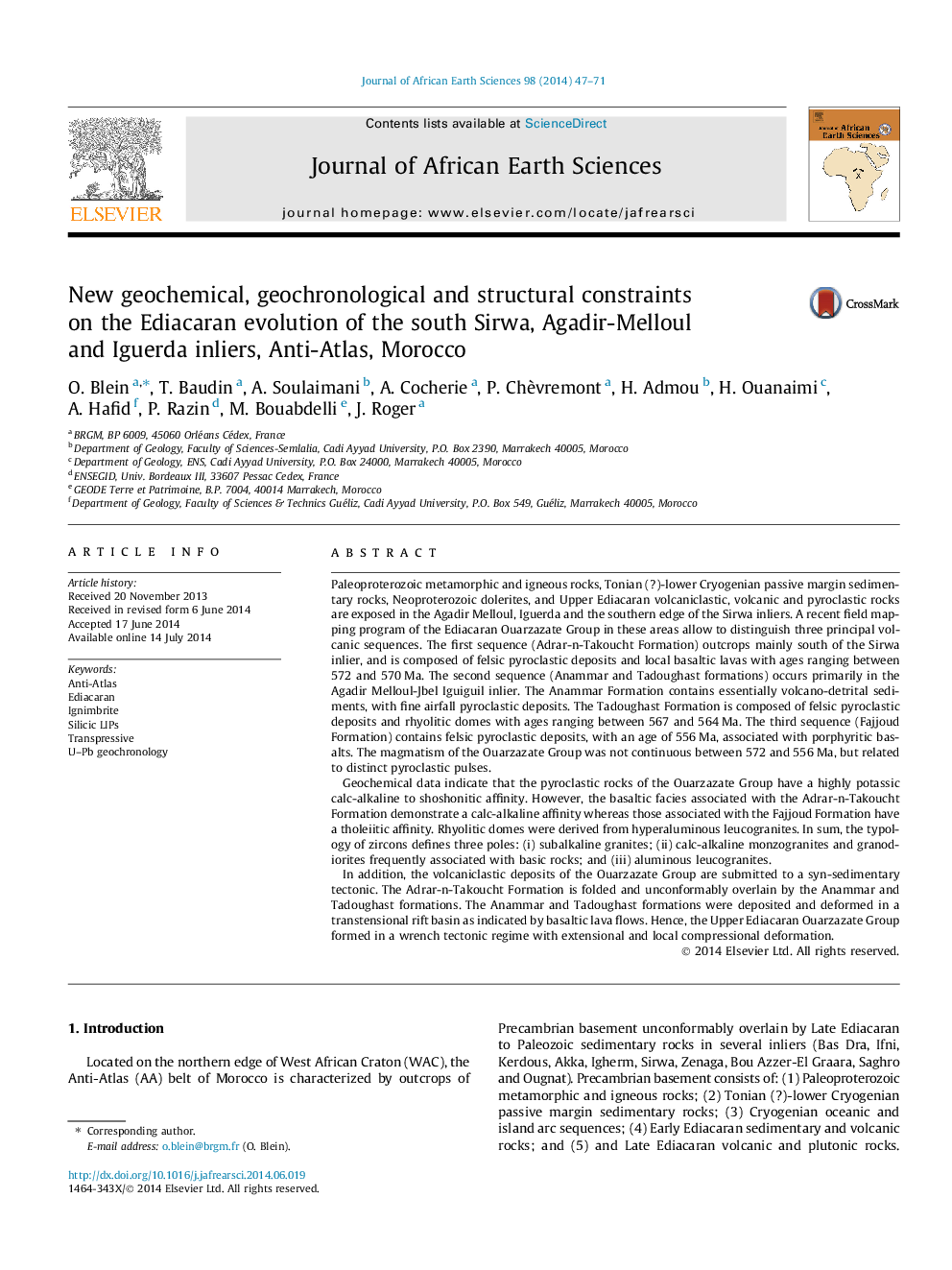| کد مقاله | کد نشریه | سال انتشار | مقاله انگلیسی | نسخه تمام متن |
|---|---|---|---|---|
| 4728852 | 1640208 | 2014 | 25 صفحه PDF | دانلود رایگان |

• An Upper Ediacaran felsic pyroclastic magmatism, the Ouarzazate Group.
• The Ouarzazate Group shares similarities with silicic large igneous province, such as the Sierra Madre occidental.
• The Ouarzazate Group is characterized by three major pyroclastic phases.
• The rare mafic rocks of the Ouarzazate Group evolve from calc-alkaline to tholeiitic affinities.
• The Ouarzazate Group takes place in a transtensional context, with local compression or extension.
Paleoproterozoic metamorphic and igneous rocks, Tonian (?)-lower Cryogenian passive margin sedimentary rocks, Neoproterozoic dolerites, and Upper Ediacaran volcaniclastic, volcanic and pyroclastic rocks are exposed in the Agadir Melloul, Iguerda and the southern edge of the Sirwa inliers. A recent field mapping program of the Ediacaran Ouarzazate Group in these areas allow to distinguish three principal volcanic sequences. The first sequence (Adrar-n-Takoucht Formation) outcrops mainly south of the Sirwa inlier, and is composed of felsic pyroclastic deposits and local basaltic lavas with ages ranging between 572 and 570 Ma. The second sequence (Anammar and Tadoughast formations) occurs primarily in the Agadir Melloul-Jbel Iguiguil inlier. The Anammar Formation contains essentially volcano-detrital sediments, with fine airfall pyroclastic deposits. The Tadoughast Formation is composed of felsic pyroclastic deposits and rhyolitic domes with ages ranging between 567 and 564 Ma. The third sequence (Fajjoud Formation) contains felsic pyroclastic deposits, with an age of 556 Ma, associated with porphyritic basalts. The magmatism of the Ouarzazate Group was not continuous between 572 and 556 Ma, but related to distinct pyroclastic pulses.Geochemical data indicate that the pyroclastic rocks of the Ouarzazate Group have a highly potassic calc-alkaline to shoshonitic affinity. However, the basaltic facies associated with the Adrar-n-Takoucht Formation demonstrate a calc-alkaline affinity whereas those associated with the Fajjoud Formation have a tholeiitic affinity. Rhyolitic domes were derived from hyperaluminous leucogranites. In sum, the typology of zircons defines three poles: (i) subalkaline granites; (ii) calc-alkaline monzogranites and granodiorites frequently associated with basic rocks; and (iii) aluminous leucogranites.In addition, the volcaniclastic deposits of the Ouarzazate Group are submitted to a syn-sedimentary tectonic. The Adrar-n-Takoucht Formation is folded and unconformably overlain by the Anammar and Tadoughast formations. The Anammar and Tadoughast formations were deposited and deformed in a transtensional rift basin as indicated by basaltic lava flows. Hence, the Upper Ediacaran Ouarzazate Group formed in a wrench tectonic regime with extensional and local compressional deformation.
Journal: Journal of African Earth Sciences - Volume 98, October 2014, Pages 47–71